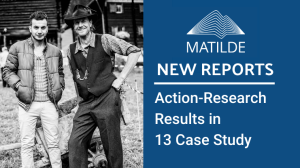Anne Goujon* and Paola Proietti**
How will ageing evolve across urban and rural regions in the coming years? What about the trends in mountain areas? To what extent the evolution of the working age population will be shaped by cohort turnover and migration flows?
These were among the questions recently answered by the Joint Research Centre (JRC) report ‘The Demographic Landscape of EU Territories’, published on 11 February 2021.
The report reveals that the share of the elderly (population 65 years old and above) is likely to increase in rural areas, from 19% in 2011 to 30% in 2050. The study also foresees that urban areas would progressively catch up with rural regions, as the share of elderly would rise from 17% to 29% in towns and from 15% to 27% in cities in the 2011-2050 period. In most EU Member States, mountain areas will not age faster compared to non-mountain areas except in Slovakia, Portugal, Spain, and Poland.
Although ageing is a common trend across the whole EU, net migration was able to compensate for a negative cohort turnover in 28% of regions, circumventing the fact that more people were exiting the working age population than entering it in the period 2015-19. The report includes two case studies focusing on Italy and Sweden. These case studies show that international migrants compensate for the negative cohort turnover of natives in Sweden, but not in Italy, which is ageing faster. However, the situation is more critical in the rural areas of Sweden that do not attract as much international migration as urban areas. The breakdown of net migration by age reveals distinct age patterns: when approaching the age of retirement, older cohorts living in the EU exhibit a high propensity to move from urban to rural regions. The opposite is true for younger cohorts who tend to concentrate in cities for study and job opportunities.
The JRC report not only deals with the patterns of ageing across Europe’s regions and territories, and their drivers but also with associated challenges and opportunities in terms of access to local services, macro-economic performances and political attitudes and electoral behaviours.
The JRC report feeds into the work on the long-term vision for rural areas, which the European Commission will present in June 2021.

Anne Goujon* is a project officer in the Knowledge Centre on Migration and Demography at the Joint Research Centre in Ispra, Italy. She is a demographer interested in population projections and in the relationship between education attainment and demographic behavior.

Paola Proietti** is a project officer in the Unit of Territorial Development at the Joint Research Centre in Ispra, Italy. She is an economist interested interdisciplinary research related to inequalities, housing and homelessness, migration and urban and regional sustainable development and governance.












